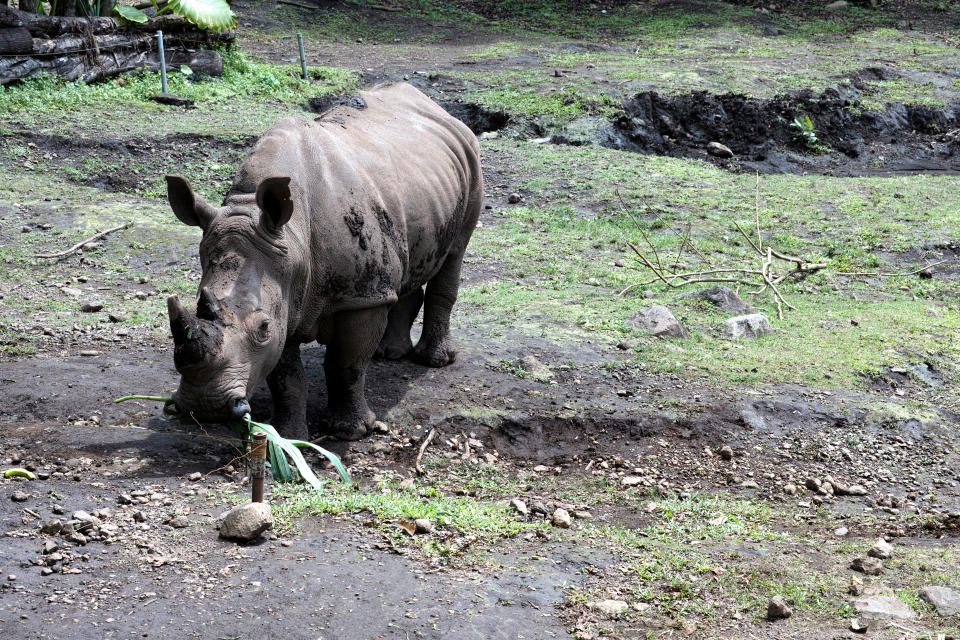Last Sumatran rhino in Malaysia dies, leaving species extinct in country
The last Sumatran rhinoceros has died in Malaysia, with the female succumbing to cancer just months after the last male died.
The Sumatran rhino, the smallest of five rhinoceros species, once roamed across Asia as far as India, but its numbers have shrunk drastically due to deforestation and poaching.
There are now as few as 80 left, the WWF conservation group estimates, living in the wild in Sumatra and Borneo in Indonesia.
Another female rhino also died in captivity in 2017 in the state. Efforts to breed them have been futile.

READ MORE
Binary Earth-sized planets possible around distant stars
Insects could die out in ‘worst exctinction since the dinosaurs’
NASA satellite captures incredible beauty of UK seen from space
Why Iran’s nuclear escalation goes unchallenged
The Wildlife Department in eastern Sabah state on Borneo island said the rhino, named Iman, died of natural causes Saturday due to shock in her system.
She had uterine tumours since her capture in March 2014.
Department director Augustine Tuuga said in a statement that Iman, who reportedly was 25 years old, was suffering significant pain from growing pressure of the tumours to her bladder but that her death came sooner than expected.
"Despite us knowing that this would happen sooner rather than later, we are so very saddened by this news," said Christina Liew, Sabah deputy chief minister, who is also environment minister.
Ms Liew said that Iman had escaped death several times over the past few years due to sudden massive blood loss, but that wildlife officials managed to nurse her back to health and obtained her egg cells for a possible collaboration with Indonesia to reproduce the critically endangered species through artificial insemination.
The International Union for the Conservation of Nature (IUCN) identifies the Sumatran, as well as the Black and Javan rhinoceros, as being critically endangered.
Both African and Sumatran rhinoceros have two horns, while the others have a single horn.
Only about 24,500 rhinos survive in the wild with another 1,250 in captivity worldwide, the IUCN says. Of these, more than two-thirds are white rhinos.
Rhinos are killed for their horns, which consist of keratin similar to human hair, and their nails and are used in traditional medicines in parts of Asia.


